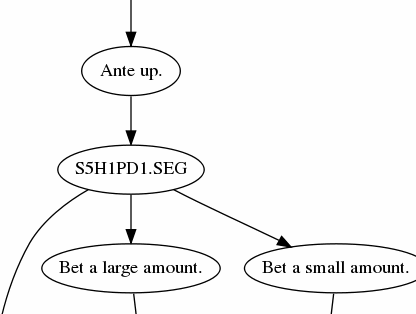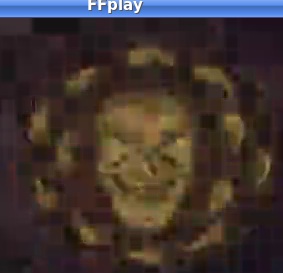I’m still on this game hacking kick. Today’s target is The Psychotron, perhaps the most painful interactive movie game I have ever seen. Thing is, I have to admit that I have never actually played this game; I am judging the game purely on the plain Cinepak/PCM AVI files that comprise the key feature of the game. I don’t even own the full game, only a demo. Granted, I have tried to play the Psychotron demo but could never make it work. These 1994 multimedia-heavy games…

Whereas the conversations in Flash Traffic: City of Angels were packed in a quasi-compressed binary format, the conversation tree in Psychotron is stored in a series of .SEG files that look like the file S5H1PD1.SEG here:
\scene5\s5h1Pd1.avi*from 23 to 283*3*Fold.*10*S5h1r1.seg*Bet a large amount.*1000*s5h1r2.seg*Bet a small amount.*500*s5h1r3.seg*
Pretty straightforward to figure out. It also helps me understand a technical matter about the game that irritated me so much when I viewed the FMV files standalone– when you view the game’s files in a standalone player, you will see that they invariably start paused with tracking lines (apparently digitized from a VCR). I am guessing that the game uses the field “from 23 to 283” to describe which frames of the file are meant for human consumption.
Anyway, I wrote a Python script to print out a Graphviz-compatible spec to map out the game demo’s dialog tree. Warning! There might be spoilers in the tree!

Click for full image
Click for Graphviz source
Ah, who am I kidding? No one cares about spoilers in this alleged story. It is interesting to note that 2 of those trees don’t correlate to any of the scenes on the disc.
The Python source code for generating the graph is below. I finally ordered the full game from an eBay seller the other day so I am wondering if the graphing utility will be applicable to the full game.

